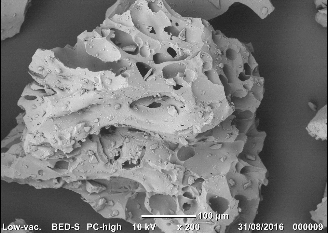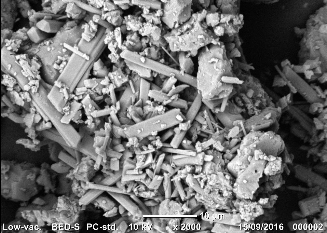
What does volcanic ash look like?
Recently we had a short lived episode of volcanic ash emission at White Island and our geologists collected some samples.
The ash was what geologists call ‘very fine’, that is the particles are very small. They reported back to us that the ash ‘didn’t show any signs of new magma been involved. So how do they know this?
The traditional method is to place the ash sample under a microscope and describe what you see. This time around they did that, as well as putting some in the new Scanning Electron Microscope (SEM) that our geothermal team has obtained. It has very powerful electron optics. One of the features of an SEM is that you can get up to 60,000X magnification. With this extra magnification we can see all sorts of detail in the ash fragments.
Below are two images of volcanic ash. In the right image is some ash from Yasur volcano in Vanuatu. Here explosions happen very 5-10 minutes from craters full of molten lava and the explosions produce a volcanic ash that is made up almost entirely of fresh magmatic particles. You can see the indentations from the gas bubbles and the ‘long’ needle like structures of the volcanic glass.
In the other image is some of the ash we collected from White Island last week. You can see it is made up of lots of angular fragments and crystals. Most of this sample is broken up rock and crystal. This sample is a marked contrast to the one from Yasur. As we can not see any fresh magmatic glass or material with gas bubbles, we are confident there is no new magma at White Island. The new SEM is going to be a big help when it comes to looking at fine ash samples from our eruptions.
Volcanic ash hazards can be very far reaching and are disruptive and damaging. Volcanic ash affects more people, infrastructure and life than any other eruptive phenomena. It consists of very small jagged pieces of rock and volcanic glass. Ash is abrasive, mildly corrosive and conducts electricity when wet. It does not dissolve in water.



